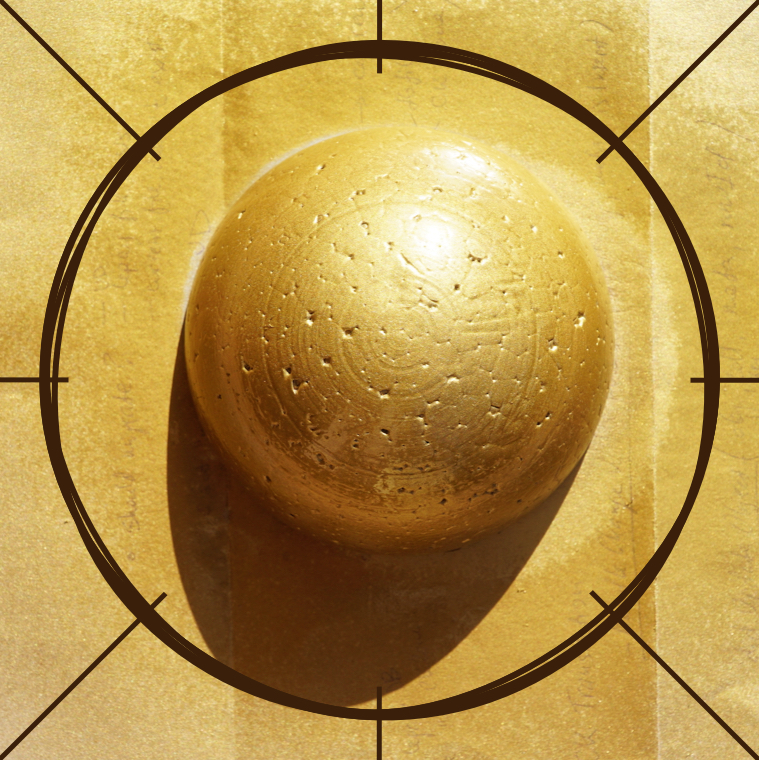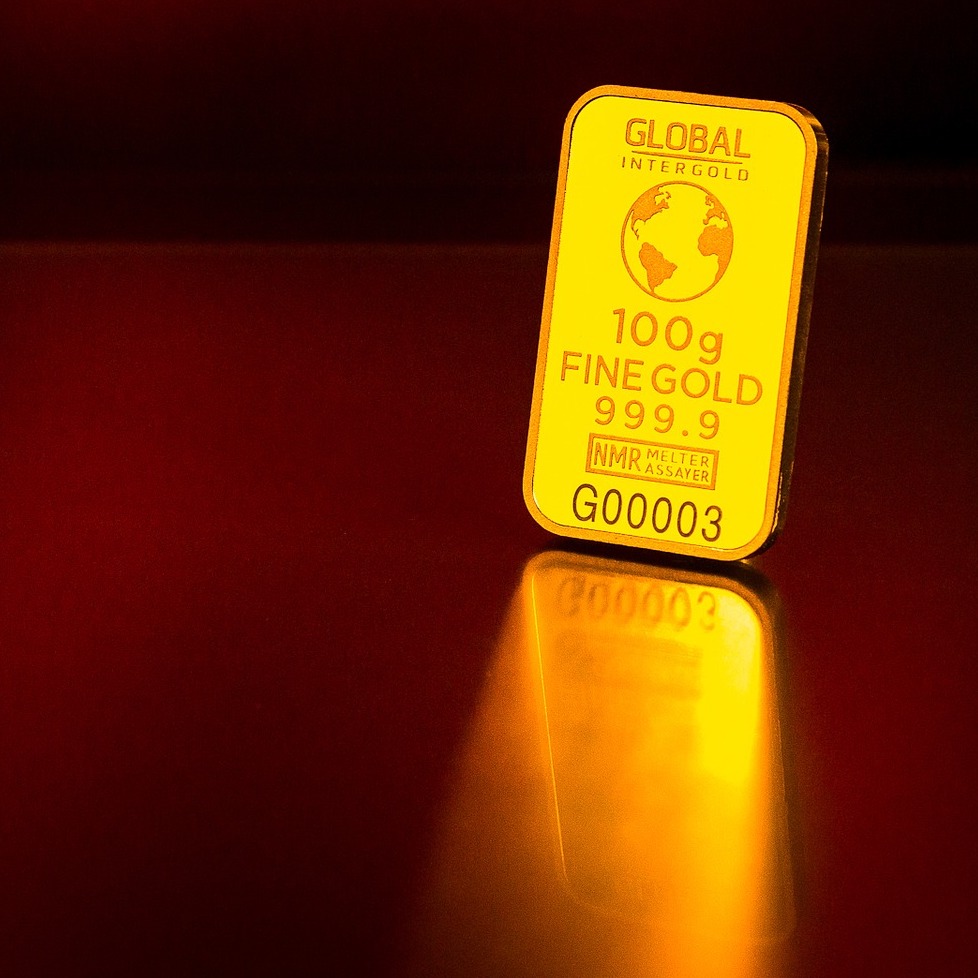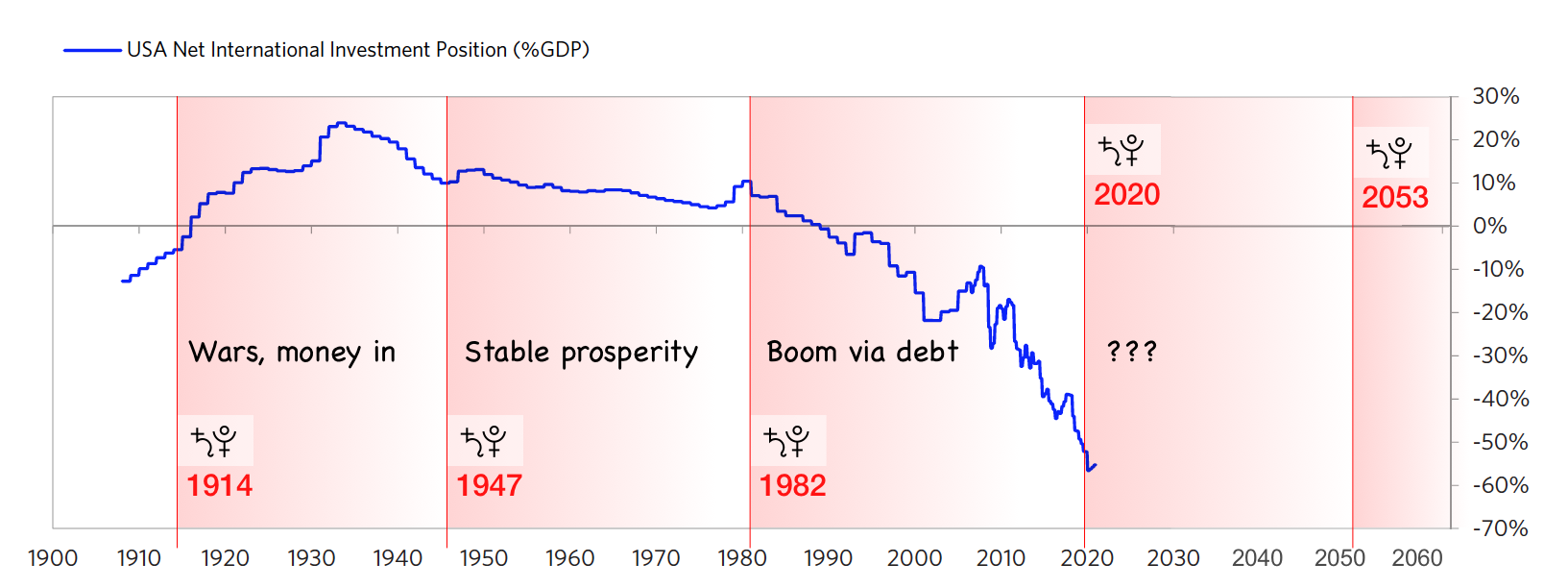Value of Gold in the time of Saturn–Pluto conjunction

In not so distant past there was a time when an ounce of gold was… $35. Just compare that to 2020’s gold price tag reaching $2,000. Mind boggles! Did something go wrong and if so, can astrology blame it all on the Saturn–Pluto conjunction?
It’s been observed that important world changes happen every time Saturn aligns with Pluto in the sky. Modern world history can be expressively mapped to the cycles of Saturn–Pluto conjunction, beginning from the onset of the First World War in 1914. “The timeline of Saturn – Pluto conjunction” covers the timeline of major world events.
Each Saturn–Pluto cycle lasts about 33–38 years and tends to project a strong shaping influence on the world economy and politics. Economy is the beating “heart” of the world, it creates things and makes them move. Symbolically the heart or the “core” corresponds to the energy of the Sun — the very center around which everything spins. It’s the Sun that makes the world go round… and so does gold.
Everybody is crazy about Gold
Gold has always been the “alpha” metal. Certainly, there are metals that are more rare and perhaps more valuable than gold. Take for example rhodium, it’s super rare, super reflective and extremely resistant to corrosion while having a high melting point. It’s a “specialist” metal that is used in a number of industries and products, perhaps most well known for its jewellery use as a shiny protective coating for silver.
Yet gold beats them all thanks to a sheer variety of its applications. Gold can be used everywhere. It’s super malleable and easy to work with. Technology, beauty and health all benefit from gold. Gold is extremely friendly to human body, even more so that silver. In medicine, fine injections of gold stimulate flow of blood from the center to periphery and alleviate age-related illnesses, for example rheumatoid arthritis.
The unique feature of gold is its “liquidity” in many meanings of the word. Gold is a perfect storage of “value”. If one wants to freeze their assets in time, one often buys gold. Gold may not bring dividends but its anti-corrosive qualities preserve initial value and thus anchor wealth to a more stable reference point.
The Sun is gold
Gold has always been seen as the metal of the Sun. Its looks, its warmth, its powerful attraction — all its qualities speak of the “king” of all planets, the source that holds and spins all bodies of the Solar System.
Gold, platinum and most other precious metals weren’t born on Earth. They arrived with 20 billion billion tonnes of asteroidal material that endlessly bombarded proto-Earth.
Gold can only be born as a result of a star going supernova, meaning collapsing onto itself and exploding. The process powerful enough to squeeze hydrogen atoms into heavier elements like gold and beyond.
Symbolically and physically gold belongs to the Sun, it’s the star material, hence its incredible allure and value. All mined gold on this planet came from that ancient asteroidal bombardment.
The Sun is gravity
One may think that Mercury is the symbolical driver of economy. Yet the true force that moves the world’s production and innovation is in the Sun. Mercury is the agent facilitating communication and exchange, while the Sun is the powerhouse behind any large scale economical activity.
Just as the gravity of the Sun spins the planets, the value of gold moves world economies. Gold is a relatively heavy metal, it speaks solidity and endurance. Gold speaks “investment” and gold attracts investment.
Gold standard impacted by Saturn–Pluto
Out of all planetary combinations, Saturn and Pluto is the most dense, frozen and “underworldly” of all. Saturn is the celestial taxman and Pluto is the king of underground riches.
The underworlds over which Pluto/Hades rules is a magical kingdom deep down in the interior of the Earth. That kingdom is richer than anything one can imagine. Geologically speaking, gold and other precious metals that were originallypart of the Earth eventually sank into the planet’s core taken deep down by its molten iron. The amount of precious metals in the core is such that it can cover the entire surface of the Earth with a four metre layer. But it’s very-very hard to get! That’s the domain of Pluto.

In 1971 the dollar has been unlinked from gold and the following “lost decade” of economical turmoil and financial tightening brought us to the next Saturn–Pluto conjunction of 1982 marked by the so-called “Reagan recession” and other painful events like Mexico’s default.
Debt cycle of 1982–2020
The most recent 38-year long Saturn-Pluto cycle of 1982–2020 brought about globalisation, digital economy and investment boom… all vigorously fuelled by debt. Never before the world encountered the mountain of debt that high.
As the result the value of dollar has been continuously sinking against gold. By 1982 gold price moved up to $447, the Global Financial Crisis of 2008 raised the bar to just below $1,000. By 2012 gold reached $1,500. In 2020 gold price was just slightly shy of $2,000. Decrease of value of US dollar was accompanied by increase in property prices while the wages mostly stayed the same.
By the year of 2020 the dollar became extremely diluted in its “real value”. The world is increasingly finding itself in the situation when a need for economical reforms outweighs perceived comfort of the old ways.
Saturn–Pluto conjunctions bring reevaluation
Reevaluation and establishing a new economic model is the cosmic function of pretty much every Saturn–Pluto conjunction. The old ways have to be let go and the new ways need to be agreed by all major world actors.

The pattern so far has been clear. The World Wars 1 and 2 brought a lot of money during 1914–1947 which resulted in a stable and prosperous post-war period of 1947–1982 (the last decade of that period was on decline). Aggressive economical reforms during 70s and 80s produced modern financial industry that was pretty much running the last cycle of 1982–2020 by the means of speculative investment and globalisation.
What will 2020–2053 cycle look like? Place your bets!
Original graph source: Ray Dalio, The Changing World Order. Saturn–Pluto cycles added by Time Nomad.
A good example was 1944 when the world has prepared itself by agreeing on a new monetary system during talks in Bretton Woods, Hampshire. The dollar was pegged to the gold standard at $35 per ounce price mark. Then closely following Saturn–Pluto conjunction of 1947 ushered the world into the new era of prosperity.
The last decade of that era witnessed a breakdown of dollar-gold relationship in 1971 that followed by an economically rough decade that took us to the 1982 Saturn–Pluto conjunction.
Years around 1982 gradually shaped the new economical methodology with its overreliance on paper fiat money that can be easily created in any amount out of thin air. Thus the period of 1982–2020 is characterised by the investment boom and further departure from the stabilising value of gold.
The advent of electronic money like Bitcoin and Ethereum is another step forward towards creating an “imaginary” measure of value that may or may not correspond to something real in the world. Yet there’s nothing wrong with cryptocurrencies. The wrongness is mostly due to the current crisis of capitalism that has notoriously mistaken greed for creativity.
Back to the Sun and gold
Future success or failure of the unfolding 2020–2053 Saturn–Pluto cycle hinges on healthy policies that will utilise the power of both gold standard and electronic money.
Each Saturn–Pluto conjunction usually unfolds during a 1-3 year period and that’s the most impactful period in terms of future decision making. Once the power of conjunction recedes, stabilising influence of the Sun begins to activate principles on which the world has agreed (or disagreed) on. Will that process be productive or painful depends on our decisions around each Saturn–Pluto conjunction.
7 Comments
James
Fantastic! Thx
AudMeg
Written with expert interpretation and knowledge. There is a whole lot more to the energies that govern astrology and the planets and it impacts humanity directly.
Sunil Soni
Hi, agree with your analysis but little doubt over Saturn Pluto conjunction. As per the graph, From 1914 to 1947 cycle why economic conditions were higher and flat in 1947 to 1982? Why its down till today?I think some other planetary aspects or conjunctions are playing role. Regarding gold prices, Saturn Jupiter conjunction reset the value of gold. This conj. happened in 1961,1981,2000,2020.
Time Nomad
The graph illustrates a relationship between “owning foreign assets” and “owing money to foreigners”.
The period of 1914–1947 saw an influx of foreign money/debt into the US due to two world wars. The US was getting lots military orders, foreign capital poured into the country.
The following period of 1947–1982 enjoyed ongoing stability. Great constant wealth based on redistribution of the “money heap” from the previous period.
By 1982 the US economy spent the “fat” and accumulated sufficient debt that began to drag it down. But debt is a good thing for financial markets. The period of 1980–2020 saw economic growth via the means of newly invented financial instruments. But debt inevitably reverses the chart since the country now owes more foreign capital than it is owed to. It can be seen a flip of the period of 1914–1947.
The graph is going down simply because currently we’re in a debt-fuelled economy phase. It will continue going down until economies begin to default, or the next war, or a major technological breakthrough, if we’re lucky.
Gold prices saw relative drops around the years 1920, 1949, 1970, 1976, 1985, 1992, 2001, 2015. Yet on the large scale the gold price doesn’t really reset, it just keep going up. Here’s the graph of macro trend. There can be many factors, not necessarily always coinciding with astrological conjunctions.
I think the beauty of the Saturn–Pluto cycle is its duration (33-38 years) that so far seems to correlate with the broader economical situation. Shorter cycles have more randomness.
Shalabh Suradhaniwar
Thanks Time Nomad.. what an Analysis, Marvellous, simply amazing, A w e Some.. very much helpful to novice beginners.
Big Thanks again & congrats!! 🙋♂️🙋♂️🙏🙏
Ali Zen
Great article. I’m hopeful that there will be some positive steps taken from all this, that’s how Pluto transforms right? There are some other factors at play but I don’t know whether they have been involved in previous conjunctions. For example how does Uranus in Taurus play a role in this? And what is it about wars that is good for the economy?
Time Nomad
Uranus is in fall in Taurus, this period covers years 2019-2026. One may say we shouldn‘t expect anything revolutionary in terms of large societal or scientific shifts. Which goes well with the whole Saturn–Pluto dynamic which is about applying pressure and thus testing for truthfulness and resilience.
Why wars are good for economy? Significant wars come at the end of economic cycle, often as the result of countries overburdened by their debt and unsolved problems. Wars allow to wipe the slate clean: default on obligations, cancel the debts, etc. They are acts of creative destruction that removes the old and establishes the new. Good for business that survive or those that feed war efforts. Terrible for all of us involved.